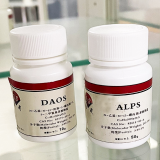- Category :
Others
- CAS NO : 82611-85-6
- EC NO :
- Molecular Formula : C11H16NNaO3S
- Main Specifications : White Powder
- Synonyms : ALPS;
Package: 500g/bottle
Uses : New trinder's reagent
Molecular Structure:

Product description:
ALPS, as a new type of Trinder's reagent with a CAS of 82611-85-6, is a chemical substance widely used in biochemical experiments. It has further improved on the basis of traditional chromogens, such as changes in water solubility, reagent compatibility, stability, etc., so it can be applied in biochemical experiments to analyze the concentration of biological molecules such as nucleic acid and protein detection.
The color reagent ALPS contains peroxidase, which can catalyze substrate oxidation reactions, resulting in color changes during the reaction process. This color change can intuitively reflect the concentration and purity of the substrate, allowing experimental personnel to quickly judge the results of the experiment.
Application of ALPS Biochemical Experiment
1. Protein testing
ALPS can be used for protein detection, as protein is an important biological macromolecule that can perform multiple functions in organisms. In biochemical experiments, ALPS binds to proteins to form complexes and undergoes color changes during the reaction process. By measuring the color changes, the concentration and purity of proteins can be determined.
2. Nucleic acid testing
Nucleic acid is a molecule contained in living organisms, including two types: DNA and RNA. In biochemical experiments, ALPS can combine with nucleic acid to form complexes, and after reaction, specific absorption wavelengths are generated. By measuring color changes, the concentration and purity of nucleic acid can be determined.
3. Quantitative analysis
By mixing the chromogenic reagent with the sample to be tested, a standard curve can be formed to determine the concentration of target molecules in the sample based on color changes. This method is fast, accurate, and sensitive in biochemical experiments, and is used by many researchers.
 CN ChemNet > Gold Suppliers > Hubei new DE sheng material science and technology co., LTD. >
CN ChemNet > Gold Suppliers > Hubei new DE sheng material science and technology co., LTD. > 